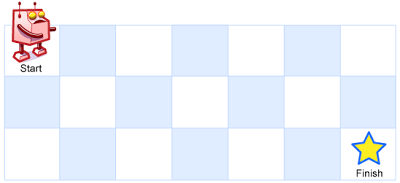Multi-dimensional Dynamic Programming¶
Table of Contents¶
- 62. Unique Paths (Medium)
- 64. Minimum Path Sum (Medium)
- 5. Longest Palindromic Substring (Medium)
- 1143. Longest Common Subsequence (Medium)
- 72. Edit Distance (Medium)
62. Unique Paths¶
-
LeetCode | LeetCode CH (Medium)
-
Tags: math, dynamic programming, combinatorics
- Count the number of unique paths to reach the bottom-right corner of a
m x ngrid.

62. Unique Paths - Python Solution
# DP - 2D
def uniquePaths(m: int, n: int) -> int:
if m == 1 or n == 1:
return 1
dp = [[1] * n for _ in range(m)]
for i in range(1, m):
for j in range(1, n):
dp[i][j] = dp[i - 1][j] + dp[i][j - 1]
return dp[-1][-1]
print(uniquePaths(m=3, n=7)) # 28
# [[1, 1, 1, 1, 1, 1, 1],
# [1, 2, 3, 4, 5, 6, 7],
# [1, 3, 6, 10, 15, 21, 28]]
62. Unique Paths - C++ Solution
#include <iostream>
#include <vector>
using namespace std;
int uniquePaths(int m, int n) {
vector dp(m, vector<int>(n, 1));
for (int i = 1; i < m; i++) {
for (int j = 1; j < n; j++) {
dp[i][j] = dp[i - 1][j] + dp[i][j - 1];
}
}
return dp[m - 1][n - 1];
}
int main() {
int m = 3, n = 7;
cout << uniquePaths(m, n) << endl; // 28
return 0;
}
64. Minimum Path Sum¶
-
LeetCode | LeetCode CH (Medium)
-
Tags: array, dynamic programming, matrix
64. Minimum Path Sum - Python Solution
from typing import List
# DP
def minPathSum(grid: List[List[int]]) -> int:
m, n = len(grid), len(grid[0])
dp = [[0] * n for _ in range(m)]
dp[0][0] = grid[0][0]
for i in range(1, m):
dp[i][0] = grid[i][0] + dp[i - 1][0]
for j in range(1, n):
dp[0][j] = grid[0][j] + dp[0][j - 1]
for i in range(1, m):
for j in range(1, n):
dp[i][j] = grid[i][j] + min(dp[i - 1][j], dp[i][j - 1])
return dp[-1][-1]
grid = [[1, 3, 1], [1, 5, 1], [4, 2, 1]]
print(minPathSum(grid)) # 7
5. Longest Palindromic Substring¶
-
LeetCode | LeetCode CH (Medium)
-
Tags: two pointers, string, dynamic programming
- Return the longest palindromic substring in
s.
5. Longest Palindromic Substring - Python Solution
# DP - Interval
def longestPalindromeDP(s: str) -> str:
n = len(s)
if n <= 1:
return s
start, maxLen = 0, 1
# Init
dp = [[0] * n for _ in range(n)]
for i in range(n):
dp[i][i] = 1
for j in range(1, n):
for i in range(j):
if s[i] == s[j]:
if j - i <= 2:
dp[i][j] = 1
else:
dp[i][j] = dp[i + 1][j - 1]
if dp[i][j] and j - i + 1 > maxLen:
maxLen = j - i + 1
start = i
return s[start : start + maxLen]
# Expand Around Center
def longestPalindromeCenter(s: str) -> str:
def expand_around_center(left, right):
while left >= 0 and right < len(s) and s[left] == s[right]:
left -= 1
right += 1
return right - left - 1
if len(s) <= 1:
return s
start, end = 0, 0
for i in range(len(s)):
len1 = expand_around_center(i, i) # odd
len2 = expand_around_center(i, i + 1) # even
maxLen = max(len1, len2)
if maxLen > end - start:
start = i - (maxLen - 1) // 2
end = i + maxLen // 2
return s[start : end + 1]
s = "babad"
print(longestPalindromeDP(s)) # "bab"
print(longestPalindromeCenter(s)) # "aba"
1143. Longest Common Subsequence¶
-
LeetCode | LeetCode CH (Medium)
-
Tags: string, dynamic programming
1143. Longest Common Subsequence - Python Solution
from functools import cache
# DP - LCS
def longestCommonSubsequenceMemo(text1: str, text2: str) -> int:
m, n = len(text1), len(text2)
@cache
def dfs(i: int, j: int) -> int:
if i < 0 or j < 0:
return 0
if text1[i] == text2[j]:
return dfs(i - 1, j - 1) + 1
return max(dfs(i - 1, j), dfs(i, j - 1))
return dfs(m - 1, n - 1)
# DP - LCS
def longestCommonSubsequenceTable(text1: str, text2: str) -> int:
m, n = len(text1), len(text2)
dp = [[0] * (n + 1) for _ in range(m + 1)]
for i in range(1, m + 1):
for j in range(1, n + 1):
if text1[i - 1] == text2[j - 1]:
dp[i][j] = dp[i - 1][j - 1] + 1
else:
dp[i][j] = max(dp[i - 1][j], dp[i][j - 1])
return dp[-1][-1]
if __name__ == "__main__":
assert longestCommonSubsequenceMemo("abcde", "ace") == 3
assert longestCommonSubsequenceTable("abcde", "ace") == 3
assert longestCommonSubsequenceMemo("abc", "abc") == 3
assert longestCommonSubsequenceTable("abc", "abc") == 3
72. Edit Distance¶
-
LeetCode | LeetCode CH (Medium)
-
Tags: string, dynamic programming
72. Edit Distance - Python Solution
from functools import cache
# Recursive
def minDistanceDFS(word1: str, word2: str) -> int:
n, m = len(word1), len(word2)
@cache
def dfs(i: int, j: int) -> int:
if i < 0:
return j + 1
if j < 0:
return i + 1
if word1[i] == word2[j]:
return dfs(i - 1, j - 1)
return 1 + min(dfs(i - 1, j), dfs(i, j - 1), dfs(i - 1, j - 1))
return dfs(n - 1, m - 1)
# Iterative
def minDistanceDP(word1: str, word2: str) -> int:
m, n = len(word1), len(word2)
dp = [[0] * (n + 1) for _ in range(m + 1)]
for i in range(m + 1):
dp[i][0] = i
for j in range(n + 1):
dp[0][j] = j
for i in range(1, m + 1):
for j in range(1, n + 1):
if word1[i - 1] == word2[j - 1]:
dp[i][j] = dp[i - 1][j - 1] # no operation
else:
dp[i][j] = 1 + min(
dp[i - 1][j], # delete
dp[i][j - 1], # insert
dp[i - 1][j - 1], # replace
)
return dp[-1][-1]
if __name__ == "__main__":
word1 = "horse"
word2 = "ros"
print(minDistanceDFS(word1, word2)) # 3
print(minDistanceDP(word1, word2)) # 3